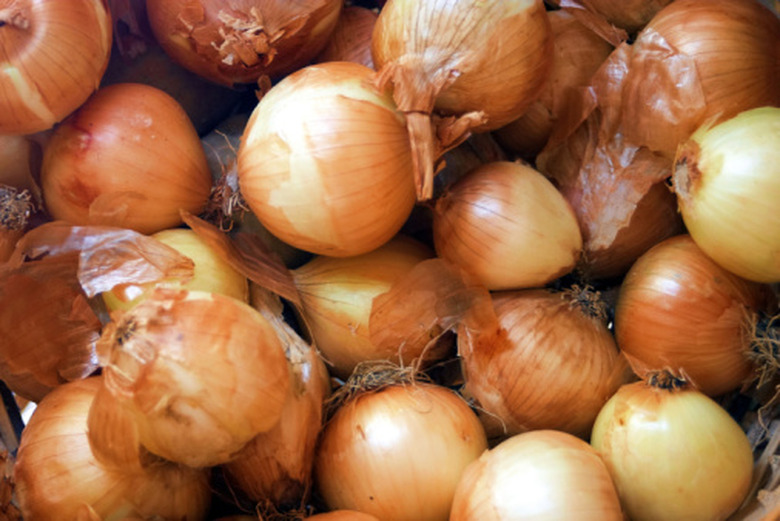Can You Grow An Onion From A Sprouted Onion?
Onions are used in various recipes and are usually on hand as kitchen staples. Some onions even begin to sprout while kept on the shelf or in the cupboard. When this happens, there is no need to throw out the sprouted onions. These onions may be planted directly into your backyard garden and used to produce more fresh onions. With proper care and planting, sprouted onions become as productive as onion seeds.
Soil
A raised garden bed, or a garden bed of soil inside a box frame made of wood with walls at least 4 to 6 inches tall, is best for onions. Prepare your garden soil for your onion transplants. Onions require loose, well-drained soil. Work an organic fertilizer, such as peat moss, into the soil prior to planting the onions. Treat the soil with a liquid or granule fertilizer rich in phosphorus, also. Water the soil well, making it moist but never soggy or muddy, as doing so rots the onions.
Transplanting
Place the sprouted onions into the garden bed at a depth of 8 inches. Space the onions 6 inches apart. Create rows of onions in your garden bed. When planting sprouted onions, ensure you place the green shoots out of the soil with the onion bulb in the soil so the plants can grow properly. Cover the onions lightly with soil, and water thoroughly to encourage the onions to grow in the garden bed.
Care
Water the onions daily, ensuring to never over water and make soil soggy or muddy. Provide them with a full-sun environment to produce maximum growth results. Fertilize the onions every two weeks with a nitrogen-rich fertilizer to produce larger, healthier onions. When new green shoots are produced, add more soil to the top of the onion plant to blanch the leaves out (turn them white). This encourages the onion to grow larger and produce more edible root. Onions should be harvested when the shoots become 1 to 2 feet long.
Problems
Watch your onions for signs of disease or pests. If the leaves appear discolored (any color other than bright, healthy green) or develop lesions, the onions may be diseased. The most common onion diseases include blight and blotch, each requiring treatment by an anti-bacterial, anti-viral or anti-fungal product. Thrips, aphids and mites are pests that harm onions. Leaf discoloration or distortion are symptoms. Treat pests with chemical insecticides or soap sprays.
References
- North Dakota State University Extension: Questions On: Onion; Ron Smith
- A Self Sufficient Life: Onions Sprouting in Store?
- Texas A&M University Aggie Horticulture; ONION PLANTING
- "The Complete Idiot's Guide to Organic Living"; Eliza Sarasohn and Sonia Weiss; 2009
